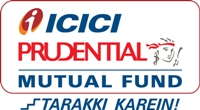5 common misconceptions about investing risk and return

There are several misconceptions about risk and return in the minds of the retail investors. These misconceptions are either due to over simplification of text book concepts or have perpetuated by vested interests. In this blog we will objectively address these common misconceptions.
Higher risk will lead to higher returns
All investors have heard of this concept. What this implies is that riskier asset class can potentially generate higher returns. What it does not mean is that a riskier asset will always give higher returns than a less risky asset. If it did, it would not be a risky asset. Let us take the example of small and midcap funds. These are, by definition, riskier than large cap funds. Financial advisors often advise investors to select small and midcap funds in bull markets, based on the risk return trade off principle. But do small and midcap funds always give higher returns than large cap funds, even in bull markets? A number of top performing large cap and diversified equity funds beat small and midcap funds over the last one year, three years and five years investment periods. A good mutual fund is one which gives better returns for the same amount of risk. One of the measures of risk adjusted returns is Sharpe Ratio. Sharpe ratio is defined as the ratio of excess return (i.e. difference of return of the fund and risk free return from Government securities) and annualized standard deviation of returns. Higher the Sharpe ratio better is the risk adjusted performance of the fund. A more effective measure of a fund manager’s ability to give superior returns is alpha. In very simplistic terms, alpha is the measure of the excess risk adjusted return given by the fund manager relative to a suitable benchmark. You should choose a fund, whose fund manager has a track record of generating good alphas.
Guaranteed returns products are best investments for conservative investors
Many investors are so risk averse that they only invest in risk free products that give guaranteed returns. It is true that products like fixed deposits guarantee your money. But it is also true that investing in these products is a guaranteed way of losing your money in real or inflation adjusted terms. A 9% interest fixed deposit with quarterly compounding will give you a post tax return of 6.4%, if you are in the highest tax bracket. Till September 2014, the inflation rate was about 6.5%. Therefore in real terms you were losing 0.1% annum by investing in fixed deposits. Some people will argue that inflation has been uncharacteristically high and is bound to come down in the future. There is no doubt inflation will come down in the future. Inflation is a reality and will not go away, even if some of the structural issues which cause high inflation in our country are solved by the Government. India is a developing economy and inflation will be caused by higher economic growth. You have to invest in equities to beat inflation and grow your wealth in the long term. Finally, beware of products which guarantees high returns. It is more likely than not, that these are fraudulent Ponzi schemes.
Buy and hold is always good
This is another text book concept, which when applied without any consideration given to market realities can result in bad consequences for the investors. The Sensex and Nifty is at all time high, but there are stocks in Sensex and Nifty which are still trading below their 2007 highs. If you bought those stocks in 2007 and are still holding it, you would not have been very pleased with the outcome. While you need to have a long term investment horizon when investing in equities, you should not be oblivious to market realities. The same applies to mutual funds. For example, thematic funds do well only in specific market conditions. As soon as market conditions change, you should exit these funds. Even in diversified equity funds you should monitor the performance of your fund relative to the benchmark and peers on a regular basis. Some diversified equity funds did very well in the 2000 to 2007 period. Many of those funds are no longer top performers. There can be number of reasons why an erstwhile top performing fund fails to maintain its performance relative to its peers. Changes in fund management team, investment style and process may be contributing factors. However, you should not exit a fund based on short term performance only. You should try to understand, why the fund has failed to give good returns and then make a decision.
Properties cannot lose value
We have heard our parents and grandparents saying property can never lose value. This is a common and certainly one of the oldest misconceptions. The reality is that the price of real estate, like any other asset, depends on the demand and supply situation. Over the last ten years, real estate in India has given good returns. But it is also true that some investors had very bad experience with their real estate investment due to delayed possession, stalled projects and in some cases the projects never taking off. There is very little transparency in the real estate sector and the purchase agreement in most cases is written in such a way that it favours the builder. Further, there is a big difference in actual returns from real estate investments and apparent returns. Returns from real estate investment are often exaggerated because investors do not consider a number of factors:-
- Home loan interest
- Possession delays
- Stamp duty
- Property tax
- Maintenance cost
- Capital gains tax
If you factor in all these unavoidable expenses, real estate returns can be much lesser than what is apparent and in many cases, be even negative. We have discussed the various considerations in real estate investment in our article, Is return from Real Estate really that high.
Risk tolerance is personality driven
Most investors are risk averse and understandably so. Nobody likes to lose money. We should understand the difference between risk appetite and risk tolerance. Simply put, risk appetite is the investor’s willingness to take risk, whereas risk tolerance is the investor’s ability to take risk. Often the willingness to take risk has very little to do with the ability to take risk. For example, a 25 year old professional with a good salary and no dependents may have low risk appetite, whereas a 65 year old retiree with a spouse and no health insurance, but with a lot of investment experience may have a high risk appetite. Risk appetite depends on the investor’s age, experience and knowledge about investments, but it differs from person to person. Risk tolerance on the other hand, depends on the financial situation of the investor and their goals. A comprehensive understanding of risk tolerance should be based on the evaluation of a number of factors.
- Long term and Short term financial goals
- Income and Expenses of the investor
- Long term and short term assets of the investor
- Both life insurance and health insurance of the investor
Conclusion
In this blog, we have discussed several common misconceptions about risk and return. Understanding your risk tolerance and the risk return characteristics of your investments is critical to the success of your financial goals. You should discuss financial goals with your financial advisor and take his help in achieving them.
RECOMMENDED READS
LATEST ARTICLES
- Why you need to have hybrid mutual funds in your portfolio: Different types of funds Part 2
- Why you need to have hybrid mutual funds in your portfolio: Misconceptions Part 1
- Which is the best time to invest in mutual funds
- Economic slowdown: Is it real and what should you do
- Importance of liquidity in investing: Mutual funds are ideal solutions
An Investor Education Initiative by ICICI Prudential Mutual Fund to help you make informed investment decisions.
Quick Links
Follow ICICI Pru MF
More About ICICI Pru MF
POST A QUERY



